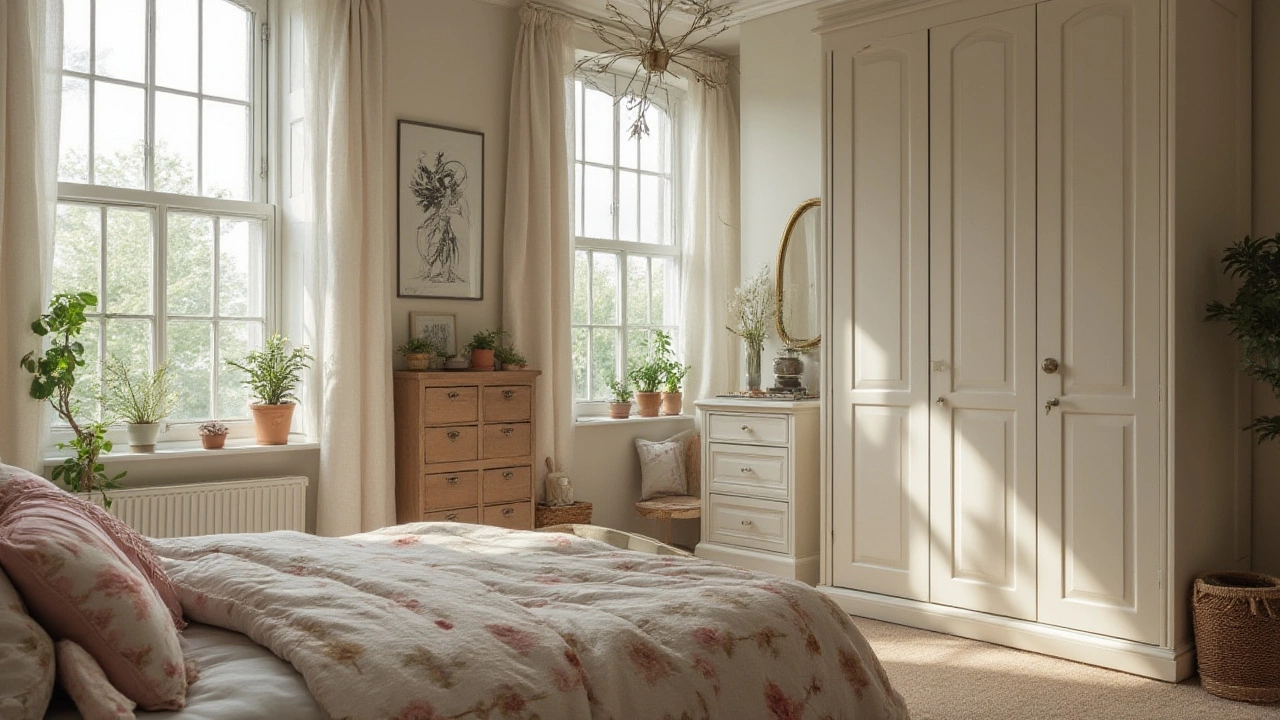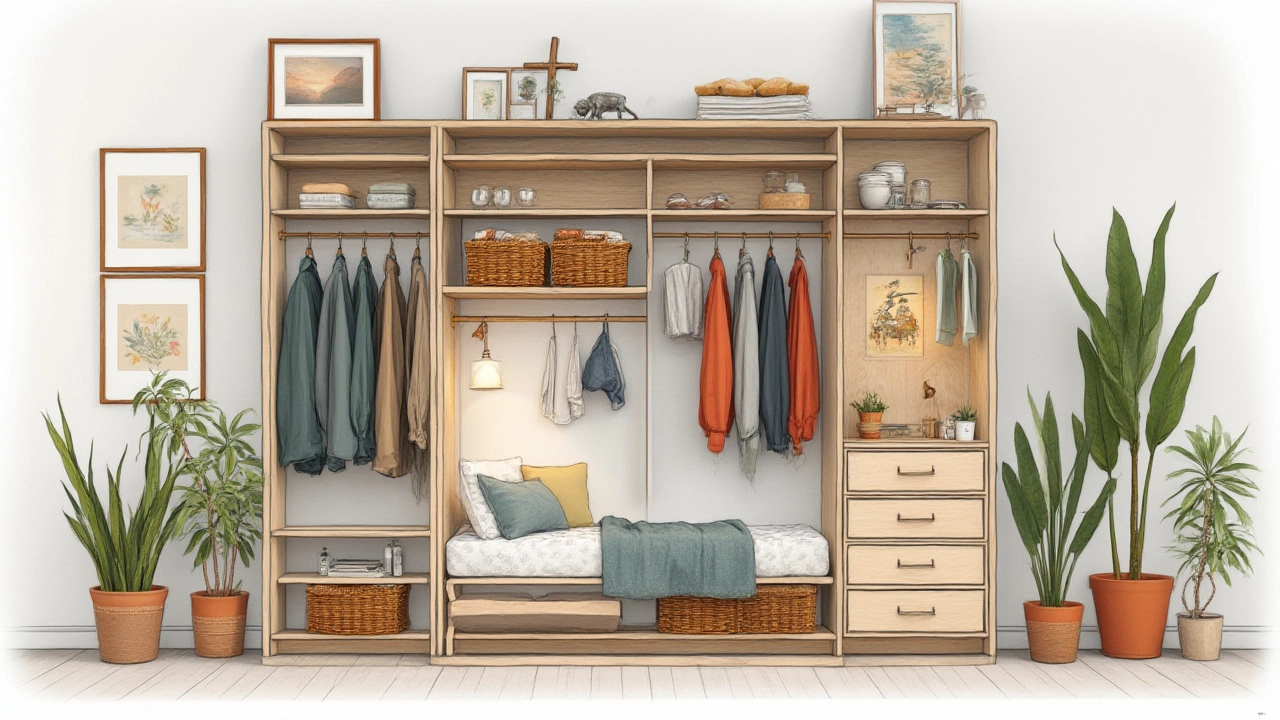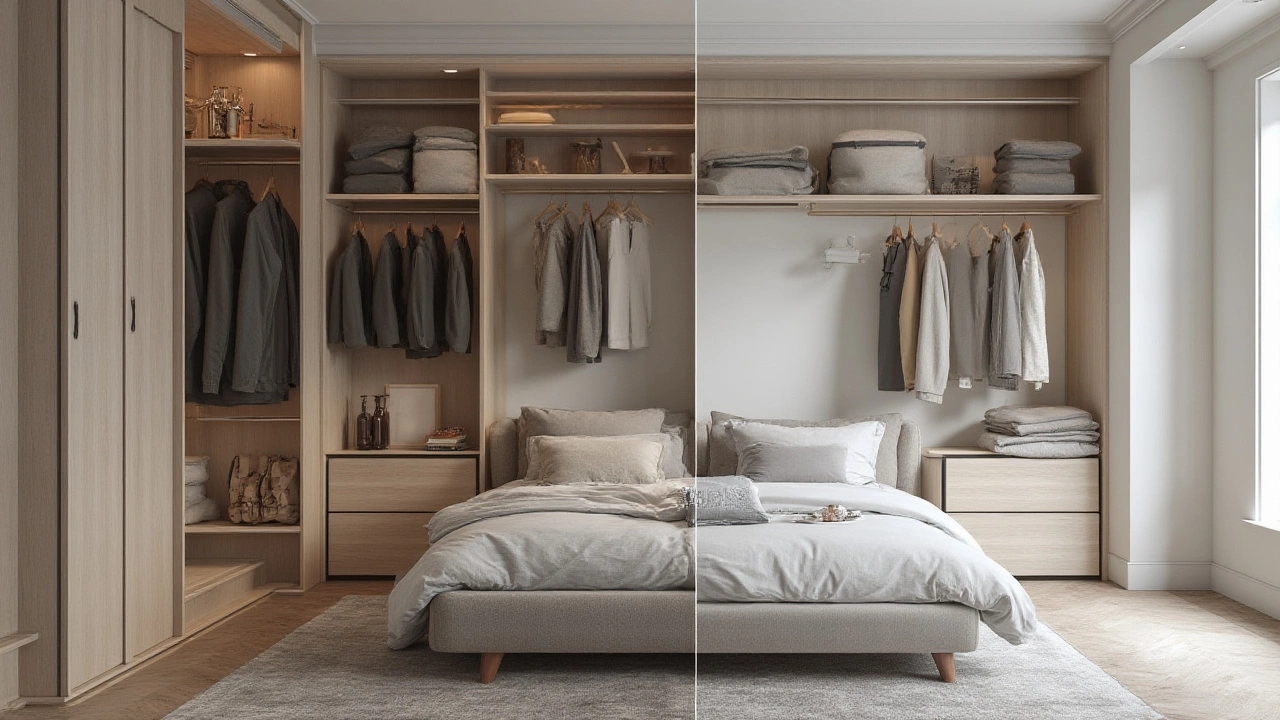Can a Bedroom Exist Without a Closet? Legal Rules, Design Tips & Storage Solutions
 Jul, 10 2025
Jul, 10 2025
Picture this: You’re house hunting in Auckland, trailing behind a real estate agent who swings open the door to a room and chirps, “Here’s the third bedroom!” You poke your head in—it’s bright, but there’s not a closet in sight. Your first thought: Can this actually be called a bedroom? Or more to the point, do you really need a closet to make it a bedroom?
What Makes a Room a "Bedroom": Unpacking the Myths
Ask ten people what a bedroom needs, and half will insist it must have a closet. The truth is more complicated. In New Zealand, as in so many other places around the world (the United States, the UK, Australia), building codes and real estate conventions actually don’t always agree. It turns out, the definition of a bedroom is surprisingly flexible—and it has a lot more to do with window size, safety, and the ability to fit a bed than whether there’s built-in storage.
Legal codes—like New Zealand’s Building Code Clause G4—focus on things like ventilation, natural light, fire exits, and minimum room size. There’s no legal mandate for a closet. This is echoed all over: Only in a few regions or cities (like some US states such as California) will you see rules that specifically require a closet for a room to be marketed as a bedroom. Even then, there are ways around it, like using a wardrobe or standalone cupboard.
It’s worth noting that some real estate agents, especially in the States, are sticklers about closets, mainly due to buyer expectations. But if you’re buying, selling, or remodeling in New Zealand, the *closet bedroom rule* is more myth than law. For example, in classic villas around Mt. Eden or Remuera, almost every bedroom relies on a freestanding wardrobe or good old under-the-bed storage—hardly any built-ins to be found unless they’ve been added during a renovation.
Instead of fixating on a closet, check what your local council or real estate guidelines really define as a bedroom. If you’re renting out a space, look for rules about egress (an easy way out in case of fire), and make sure the room has proper windows and enough space for standard bedroom furniture.
Legal Requirements for Bedrooms: Building Codes and Safety First
Let’s dig deeper into the official stuff. Across most of New Zealand, "bedroom" isn’t strictly defined by the presence of a closet. Here's what actually matters—
- Minimum room size: The Building Code recommends enough space for a bed and to move around. For a single, that’s at least 6m², for a double, 10m² or more.
- Windows and ventilation: Fresh air and natural light are essential. Your bedroom needs to have a window big enough for easy escape during emergencies—a fire safety must.
- Door and privacy: A door that closes is part of what makes a real bedroom.
- Ceiling height: Most codes like a minimum of 2.1m (measured for at least half the room).
- Means of egress: There must be a way out in case of fire, typically a window large enough or direct access to the outside.
Notice what’s missing? Yep, no mention of closets. This holds true in most regions globally. Even in the US, where people often expect closets, building codes like those enforced in New York just ask for minimum room size and two features: natural light and fresh air.
Here’s a quick look at some requirements in different places:
| Region | Closet Required? | Other Main Requirements |
|---|---|---|
| New Zealand | No | Window, size, privacy, egress |
| UK | No | Window, space, door |
| Australia | No | Window, space, privacy |
| USA (most states) | No | Size, window, privacy |
| USA (some cities) | Yes | Depends—closet sometimes required |
So the law won’t stop you calling it a bedroom unless there are more weirdly specific local rules. (If you’re really worried, check your local council or ask a real estate lawyer who actually works in your neighbourhood.)

Why so Many Bedrooms Don’t Have Closets
Take a stroll through a classic Kiwi bungalow or a pre-war villa and you’ll see it: clever freestanding wardrobes, a chest of drawers squeezed into a bay window, maybe a sweet old armoire stuffed with jumpers. For decades, New Zealanders—and, for that matter, people in the UK and parts of Europe—basically just made do without built-in closets.
Why? For a long time, purpose-built closets weren’t really the thing. Up until the mid-20th century, most homes simply weren’t designed with built-ins. Residents used standalone wardrobes (IKEA, anyone?), trunks, even hooks on the back of the door. In Auckland, older homes in places like Grey Lynn or Ponsonby rarely had closets until renovations brought them in.
Over in the US, built-in closets have become more standard since the 1950s, but expectations still depend on where you are. Modern developers include them in new builds, but a 1920s Brooklyn brownstone or a Christchurch bungalow likely won’t have them at all. Functionally, closets just weren’t a priority until stuff got cheaper and plentiful, and the average wardrobe ballooned.
On a personal note, my own kids’ bedrooms only had built-in wardrobes after a small reno last year. Before that, Dorian’s room used a big old dresser; Selena’s had a vintage standing wardrobe I picked up at a flea market for $80. The kids didn’t care—all they really wanted was space to spread Lego everywhere, no matter where their clothes went.
So the "closet question" is usually about convenience and habit, not some strict rule for bedrooms. People tend to want a closet because it’s practical, but you don’t actually need one to make a bedroom workable, comfy, or even legal.
How to Make a Closetless Bedroom Work: Real Storage Solutions
Here’s where real life kicks in—if you’re short a closet, you still need to stash your gear somewhere. Whether you’re working with a tiny upstairs nook or a big breezy master with no built-ins, there are countless ways to keep things tidy and functional.
First up, wardrobes. You can get a basic PAX unit from IKEA, a sliding-doors number from your local Mitre 10, or hunt for a quirky vintage armoire on Trade Me. Free-standing wardrobes work just as well as built-ins and are perfect for renters (or those with commitment issues). You can even paint or wallpaper them to match your decor.
Shelving puts blank walls to work in a small space. Floating shelves above the bed can hold books, baskets, and all those childhood treasures Dorian and Selena seem to collect. If you’re handy, try open closet rails—think a metal rod across one wall for hanging shirts and dresses with space below for shoes. It’s the look you’ll spot in fancy boutique hotels and design magazines, now popping up in homes everywhere.
Still tight on space? Underbed storage is a lifesaver. Shallow bins slide under easily and keep out-of-season clothes out of sight. Collapsible boxes (some even with labels and clear tops for easy searching) hold everything from socks to spare blankets. A bed with drawers built in is an even neater solution.
- Use big baskets for winter jumpers or soft toys (pro parent tip: they’re great for speedy clean-ups before Nana visits).
- Install hooks on blank walls or behind doors for bags, hats, or tomorrow’s outfit.
- Try a tall dresser or even modular cube shelves for folded clothes, shoes, and random bits. You can rearrange them whenever you want a new look.
- If the room is big enough, create a makeshift walk-in wardrobe by hanging a curtain across a corner with open shelves and a rail—voila, instant "closet."
Smart storage isn’t just about hiding clutter. It can add character, colour, and even humour to a space. My daughter has a rainbow row of hooks for bags and hats—practical, but they make her room look cheerful (and give stuff an obvious home). Kids love clear cubes because they can see their favourite shirts at a glance.
If you’re staging a home to sell, adding a few stylish storage pieces helps buyers picture the room as a bedroom—which can boost your sale price. Even DIYers can install an open rail system or buy a nice standing wardrobe for less than the cost of a new built-in.

Making the Call: When and Why You Might Want a Closet
Okay, so you don’t have to have a closet—but should you want one anyway? Here’s the real-world view: if you have the space and plan to stay awhile, a built-in can definitely make life easier. It cuts clutter and raises the value of your home, especially for resale. Young families (guilty as charged) often want a place to hide the chaos. If you’re short on room, a smartly designed standing wardrobe can do nearly the same job.
Storage needs change as your household grows or shrinks. A single person or a couple can probably get away with shelves and bins; teenagers or sharers juggling more clothes or hobbies might crave full storage setups. If you’re turning a home office into a spare room for guests, you probably don’t need a closet at all—space for a bed and a chair will do just fine.
There are moments when closets become crucial. If your council has specific rules, or if you’re selling into a market where buyers expect one, adding at least a modest built-in makes sense. But for most homes—especially here in Auckland, where houses range from historic cottages to space-age builds—creative solutions matter most.
If there’s one thing I tell fellow parents, it’s this: Don’t stress. My own kids didn’t even notice the difference when they swapped from dressers to built-ins, except they had more floor space for Lego battles. At the end of the day, a room is a bedroom if you can sleep in it, close the door, and stash your stuff somewhere—closet or not.